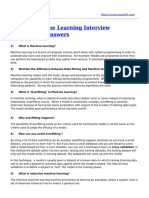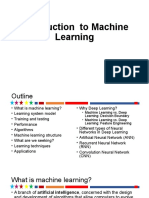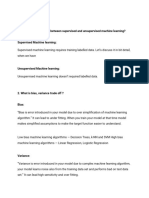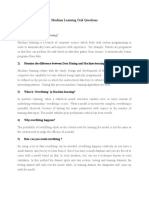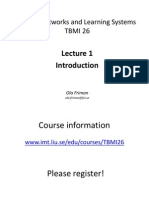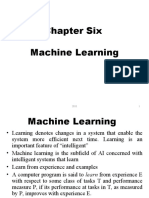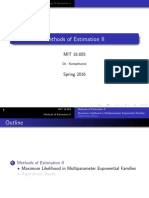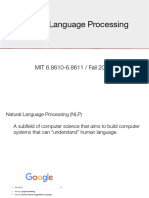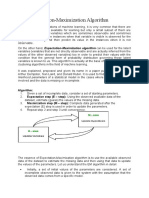0% found this document useful (0 votes)
9 views15 pagesMachine Learning Ass
The document provides an overview of various machine learning concepts, including inductive bias, decision trees, perceptrons, and algorithms like backpropagation and Q-learning. It explains key terms such as hypothesis space, version space, and fitness functions in genetic algorithms, along with their roles in machine learning. Additionally, it covers the structure and learning processes of decision trees and multilayer neural networks.
Uploaded by
rajkumarkus2004Copyright
© © All Rights Reserved
We take content rights seriously. If you suspect this is your content, claim it here.
Available Formats
Download as PDF, TXT or read online on Scribd
0% found this document useful (0 votes)
9 views15 pagesMachine Learning Ass
The document provides an overview of various machine learning concepts, including inductive bias, decision trees, perceptrons, and algorithms like backpropagation and Q-learning. It explains key terms such as hypothesis space, version space, and fitness functions in genetic algorithms, along with their roles in machine learning. Additionally, it covers the structure and learning processes of decision trees and multilayer neural networks.
Uploaded by
rajkumarkus2004Copyright
© © All Rights Reserved
We take content rights seriously. If you suspect this is your content, claim it here.
Available Formats
Download as PDF, TXT or read online on Scribd
/ 15



